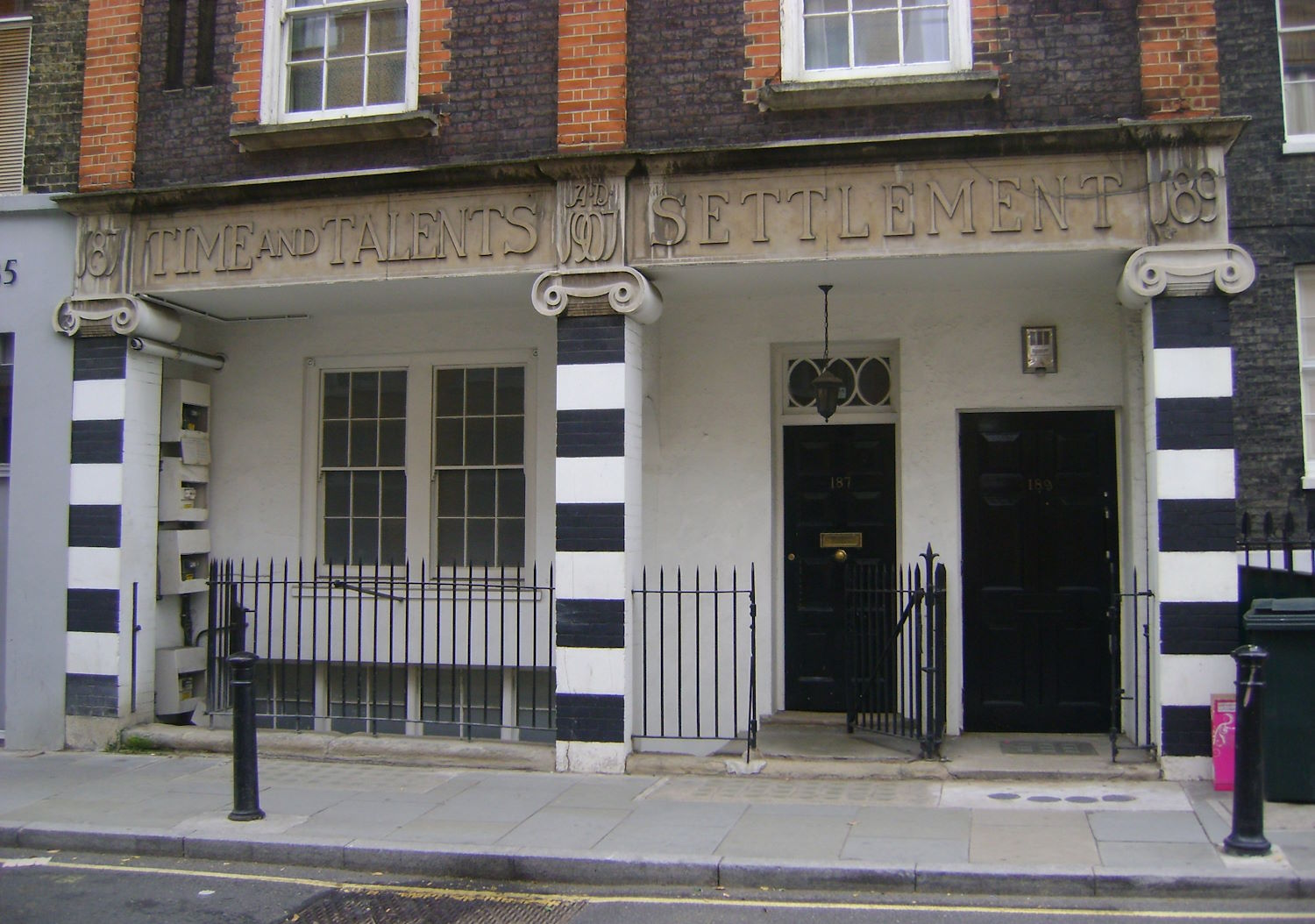 E. Leslie Sewell and youth work. E. Lesley Sewell made an outstanding contribution to the development of youth work – both being a pioneer of mixed-club work and the facilitator of a range of innovative projects and provisions. We explore her contribution.
E. Leslie Sewell and youth work. E. Lesley Sewell made an outstanding contribution to the development of youth work – both being a pioneer of mixed-club work and the facilitator of a range of innovative projects and provisions. We explore her contribution.
contents: introduction · national association of mixed and girls’ clubs · conclusion · further reading and references · how to cite this article
The picture of the old Time and Talent Settlement (officially opened in 1908), Bermondsey Street is by Sarflondonunc flickr | ccbuncnd2
______
Edith Lesley Sewell (1901-1975) was born in Stamford Hill, part of the London Borough of Hackney. Her father – Edward Disney Sewell – was a brewery manager (the Anchor Brewery, Mile End Road) who had also been born in Mile End Old Town. He and Edith Lesley’s mother, Jane Stuchbury, had married in 1887. Whether her surname was actualy ‘Stuchbury’ is an interesting question. One of the press annoucements of the wedding states that Jane was the younger daughter of W. O. Stuchbury and of Mrs Silver, Castle-hill, Maidenhead. W. O. Stuckbury had died 18 years earlier.
Edith Lesley She was educated at St. Leonard’s School, St. Andrews. She won a mathematics scholarship to Newnham College, Cambridge (graduating in 1923) – but came to see her future in social work. She trained at the the London School of Economics. While at LSE she became a resident at the Time and Talent Settlement. Harold Hayward (1966) has commented that the living conditions and poverty in Bermondsey made a great impression on her and it was not surprising, therefore, that when she left the LSE she became Bursar and a Tutor at Time and Talents (from 1925). She went on to be a Warden in the early 1930s. Marjorie Daunt has described her as ‘one of the great Settlement Wardens’.
She had more than her fair share of qualities which seem too good to be true, but they WERE true. Combined with a first class brain, she had great integrity and vision, a lovely sense of humour and fun and enjoyment of life. Modest withal, and transcending all, was her Christian faith. Her influence for good was tremendous. (Daunt 1989: 18)
Lesley Sewell and National Association of Mixed and Girls Clubs
E. Lesley Sewell’s experience of girls’ and mixed work at Time and Talents was put to very good use. She went on to be General Secretary of the National Association of Mixed and Girls Clubs (which then became the National Association of Youth Clubs) from 1952 to 1966. She joined the organization at the start of 1940 as Deputy Organizing Secretary. (Honoria Harford. a previous warden and colleague at Time and Talents had also, earlier, joined the National Association as organizing secretary.) Under Lesley Sewell’s guidance the Association developed a number of significant programmes and initiatives including Endeavour Training and Phab (Physically Handicapped and Able Bodied) clubs and responded to changes in the wider youth work environment (especially in relation to the Albemarle Report). Perhaps the best known response was the growth of developmental and experimental project work – especially around detached youth work (see, especially, Mary Morse’s [1965] The Unattached). In addition, the pioneering King George VI Leadership Training Course was largely her creation. An increasingly key element of her work was the furthering of co-operation with local authorities and voluntary agencies. In many respects she was the architect of the ‘modern NAYC’ which was ‘concerned with pushing forward the frontiers of the youth service in its work with the “unattached” and its re-thinking of youth club work in terms of the 1970s’ (Hayward 1966).
She was a member of the Newsom Committee, the British National Committee on Social Work, Westhill Training College Advisory Council and, in 1960, became a Governor of the National College for the Training of Youth Leaders, Leicester. She also became a member of the Youth Service Development Council in 1967.
Conclusion
E. Lesley Sewell made an outstanding contribution to the development of youth work – both being a pioneer of mixed-club work and the facilitator of a range of innovative projects and provision. Sir John Wolfenden, writing in the National Association of Youth Clubs’ magazine, commented: ‘Nobody can doubt that the honour of OBE which Her Majesty the Queen has bestowed on Lesley Sewell is totally deserved. Those who know what she has done, especially those who have seen the Association grow to new responsibilities, with new emphasis in new circumstances, know how much of the expanding policies of the Association have been inspired by her patient, farsighted and essentially practical vision’ (quoted by Hayward 1966).
Further reading and references
Daunt, M. (1989) By Peaceful Means. The story of Time and Talents 1887-1987, London: Time and Talents Association.
Hayward, Harold (1966) ‘Thank you Miss Sewell’, Youth Service 6(8) October.
Morse, M. (1965) The Unattached, Harmondsworth: Penguin.
Sewell, E. Lesley (1966) Looking at Youth Clubs, London: National Association of Youth Clubs. Available in the informal education archives: http://www.infed.org/archives/nayc/sewell_looking.htm
How to cite this article: Smith, Mark K. (2007). ‘E. Lesley Sewell and youth work’, The encyclopedia of pedagogy and informal education. [https://infed.org/mobi/e-leslie-sewell-and-youth-work/. Retrieved: insert date].
© Mark K. Smith 2007

